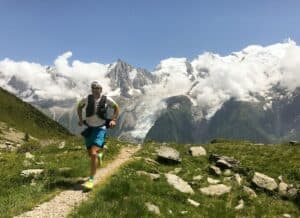Embracing the excitement and challenge of trail running is a rewarding journey for newcomers and experienced athletes alike. If you’re seeking guidance on how to train for trail running, this comprehensive guide is your gateway to a fulfilling experience.
The Basics of Trail Running

What Is Trail Running?
Trail running is a form of running that takes place on hiking trails, footpaths, or unpaved routes. Unlike traditional road running, trail running offers a diverse and often challenging terrain that can include hills, uneven surfaces, and natural obstacles.
The Appeal of Trail Running
Trail running offers a plethora of benefits, both physical and mental. It allows you to connect with nature, escape the hustle and bustle of city life, and experience a sense of adventure. The constantly changing terrain keeps your mind engaged, and it’s an excellent way to build strength and stamina while burning calories.
Choosing the Right Trails
Importance of Selecting Suitable Trails
One of the first steps in training for trail running is choosing the right trails. Your choice will significantly impact your experience. Beginners should start with well-marked and less technical trails, while experienced trail runners might seek more challenging and technical terrain.
Finding Local Trails
Research local hiking and trail running spots, or consult websites and apps designed to help you discover trails in your area. Local running clubs can also provide recommendations.
Essential Trail Running Gear

Gear for Trail Running
The right gear is essential for a safe and enjoyable trail running experience. Here are some key items to consider:
- Trail Running Shoes: Invest in a good pair of trail running shoes with proper grip and support.
- Apparel: Wear moisture-wicking clothing that suits the weather conditions.
- Hydration Packs: Stay hydrated with a comfortable hydration pack.
- Accessories: Items like a hat, sunglasses, and sunscreen can protect you from the elements.
Trail Running Techniques
Proper Running Techniques
The way you run on trails differs from road running. Here are some techniques to keep in mind:
- Uphill Running: When going uphill, shorten your stride and focus on breathing.
- Downhill Running: Maintain control when descending, using smaller steps.
- Uneven Terrain: Keep your balance and be alert to the terrain.
Training for Trail Running
Creating a Training Plan
A well-structured training plan is crucial for trail running success. Here are the key components to consider:
- Mileage and Intensity: Gradually increase your weekly mileage and mix in various intensities.
- Cross Training: Incorporate activities like cross-country skiing to build overall fitness.
- Strength Training: Develop strength through exercises targeting your legs, core, and upper body.
Nutrition and Hydration

Nutritional Needs
Trail runners have unique nutritional needs due to the challenges of the sport. Proper nutrition can improve your performance and help with recovery. Consider:
- Hydration: Stay well-hydrated to prevent dehydration.
- Nutrition Tips: Fuel your body with a balanced diet that includes carbohydrates, protein, and healthy fats.
Staying Safe on the Trails
Safety Concerns
Safety should always be a top priority. Know how to handle potential challenges, including:
- Wildlife: Be aware of your surroundings and know how to react to wildlife encounters.
- Emergencies: Carry a basic first-aid kit and know how to use it.
Trail Running Communities
Benefits of Joining Communities
Trail running communities offer a fantastic way to connect with like-minded individuals and gain valuable insights. Consider:
- Local Groups: Find local running clubs or organizations that organize group runs.
- Online Communities: Join online forums and social media groups to interact with the trail running community.
Designing Effective Training Sessions
Once you’ve decided to embrace the world of trail running, it’s crucial to create a well-structured training program that caters to your specific goals. Here’s how you can optimize your training sessions to prepare for your trail races:
Training Program Essentials
A successful training program for trail running should encompass a variety of elements. It’s important to include:
- Race Distance Specifics: Tailor your training sessions to the distance of your target race. Whether you’re aiming for a 5k or an ultramarathon, your training should reflect the challenges of that particular race distance.
- Varying Paces: Don’t stick to the same pace throughout all your training sessions. Incorporate speed runs, long runs at an easy pace, and tempo runs to build your stamina and speed.
- Trail Running Specifics: While flat terrain is easier on the legs and great for beginners, don’t neglect hill repeats. These help you build strength and endurance for those challenging uphill sections on the trail.
Managing Training Time
Another essential aspect of your training program is time management. With busy lives, finding time for training can be a challenge. Here are some tips to maximize your training time efficiently:
- Consistency: Schedule your training sessions at the same time each day or week to create a routine that your body adapts to.
- Prioritize Rest Days: Ensure your training program includes rest days. These are crucial for recovery and injury prevention.
- Race Day Simulation: As you approach your race day, plan a training session that simulates the conditions you’ll face. This can help you mentally and physically prepare for the big day.
Trail Running on Flat Terrain

Trail running doesn’t always mean steep hills and technical terrain. Flat terrain can be equally challenging and rewarding. Here’s how you can make the most of it:
Technique on Flat Terrain
- Maintain a Steady Pace: Unlike the undulating hills, flat terrain allows for a more consistent pace. Focus on maintaining a steady rhythm.
- Stride Efficiency: Pay attention to your stride length and efficiency. On flat terrain, you can work on your running form and develop a more effective stride.
Race Day Preparedness
When race day finally arrives, it’s crucial to be well-prepared mentally and physically. Here are some tips to ensure your race day success:
- Mind Your Pace: Avoid the temptation to start too fast. Stick to your race plan and pace yourself for a strong finish.
- Hydration and Fueling: On race day, ensure you’re well-hydrated and fueled. Practice your nutrition strategy during your training sessions to find what works best for you.
Trail running is a unique sport that caters to various preferences and fitness levels. Whether you’re conquering flat terrain or navigating steep hills, the key to success lies in your training program, your ability to adapt to different paces, and your preparedness for race day. By following these guidelines, you can tailor your training to your needs and achieve your trail running goals.
Final Thoughts: How to Train for Trail Running
In conclusion, trail running is an exciting and rewarding sport that can offer you a unique connection with nature and a fun way to improve your fitness. Remember to choose the right trails, invest in the proper gear, and follow a structured training plan. Staying safe on the trails and connecting with the trail running community will enhance your experience. Happy trail running!
By following these guidelines, you can gradually build strength, improve your running pace, and prepare yourself for the challenge of trail races. Whether you’re a beginner or an experienced trail runner, this comprehensive guide will help you develop your skills and enjoy the world of trail running to the fullest.
